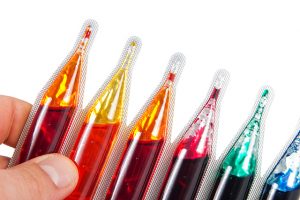
Brilliant blue FCF sources, health risks
Tuesday, October 17, 2017 by Jhoanna Robinson
http://www.naturalpedia.com/brilliant-blue-fcf-sources-health-risks.html

Brilliant blue FCF is a coloring agent that is often used with tartrazine to make various shades of the color green. The coloring can usually be found in artificially processed peas, sweets, dairy products, and drinks. Studies show that brilliant blue FCF is known to cause tantrums in children; this is why parents are cautioned against letting their kids ingest products that contain the synthetic compound.
Brilliant blue FCF is soluble in ethanol, ether, and in five percent water solution at 20 and 98 degrees Celsius.
Harmful effects that can be caused by brilliant blue FCF
Brilliant blue FCF can cause metabolic acidosis, which is a disorder that is characterized by the body producing too much acid because the kidneys are impaired and cannot remove much of the toxins that are lodged in the body.
Brilliant blue FCF can cause harm to the deoxyribonucleic acid (DNA) and many genotoxic effects in mammalian cells.
Body systems harmed by brilliant blue FCF
Brilliant blue FCF is bad for the digestive system. It can cause increased gastrointestinal permeability or leaky gut, which results in inflammatory bowel diseases. It can also cause stress to the intestinal epithelium. Grandular deposits in the stomach were also observed in people exposed to the substance.
Brilliant blue FCF is bad for the excretory system. A study that was conducted in 1961 showed that mice that ingested daily injections of two milligrams of the substance over 30 days showed swelling of the liver and spleen not shortly after they received their fourth-milligram dose. The substance can also damage the kidneys.
Where to learn more
- The Food We Eat could Have Poison in It
- Candy bars recalled after tests reveal lead contamination
- Chemical Additives – Are They Slowly Killing Our Children?
- Know what you eat before you eat it
- Know what’s In your food (Opinion)
Summary
Brilliant blue FCF is a coloring agent that is often used with tartrazine to make various shades of the color green.
Brilliant blue FCF can cause harm to the deoxyribonucleic acid (DNA) and many genetoxic effects in mammalian cells.
Brilliant blue FCF is bad for the digestive and excretory systems.
Sources include:
Tagged Under: Tags: brilliant blue FCF






